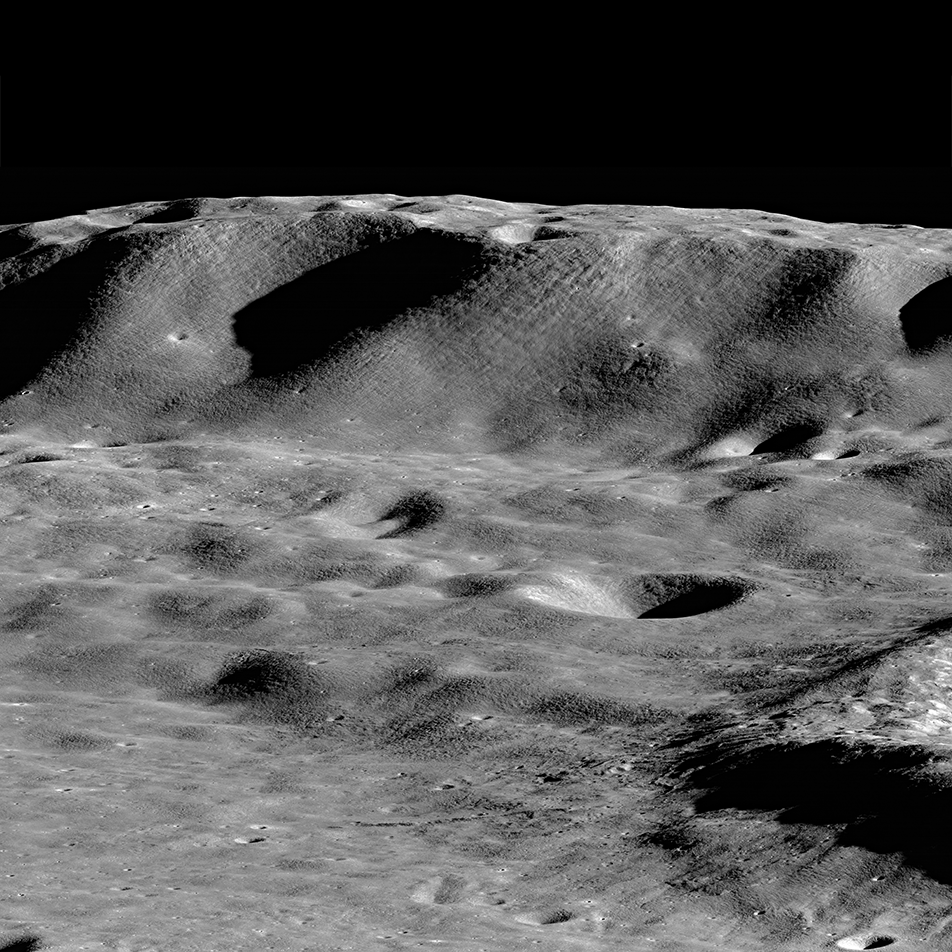
Mountains on the Moon form in a matter of seconds as a result of asteroidal and cometary impacts, in contrast to those on the Earth, where mountain chains we see today formed slowly as plates collided and buckled the crust. Within the image shown above there is 7,570 m (24,500 ft) of elevation from the lower foreground to the summit of Zeeman mons, and the maximum relief above the Zeeman crater floor (see map below) is about 8,800 meters (28,870 ft). For comparison, Denali (also known as Mount McKinley) rises from base to summit only 6,140 m (20,146 ft).
Since Zeeman crater formed on the bottom of the mighty South Pole–Aitken (SPA) basin, its floor lies more than 6,000 m below the lunar mean radius, and the highest point shown here rises only a bit more than 2,400 m above the mean radius (even though its prominence is 7,570 m). Since the Moon has no oceans, and thus no sea level, one can think of the mean radius as the lunar equivalent to sea level on the Earth.
The highest point on the Moon lies on the northern rim of the SPA basin with an elevation of at least 10,786 meters (35,387 feet) above the mean radius. The lowest point lies in the bottom of a 15 km diameter unnamed crater, which is on the floor of Antoniadi crater which in turn is on the floor of the SPA.

Topographic map (LROC WAC stereo and LOLA laser based) of the region around Zeeman Mons (red and white). Arrow indicates look direction of LRO when picture was taken (spacecraft position off the map to to the right).
Explore the full NAC view of Zeeman Mons:
Related Featured Images
Soaring Over Mighty Mt. Hadley
Published by Mark Robinson on 20 November 2017